
Neal
What Is Vibe Coding?
TLDR;
- Vibe Coding is AI-assisted software development where you describe what you want using natural language prompts, and AI handles the actual code creation and implementation
- Anyone can use it - from complete programming novices to experienced developers, entrepreneurs, designers, and educators - dramatically lowering the barrier to software creation
- Key advantages include faster development, rapid prototyping and enhanced productivity, allowing focus on vision rather than syntax
- Creative freedom is unleashed - developers can focus on big-picture vision and functionality while AI handles the technical implementation details
- Real-world applications range from simple tracking apps to interactive prototypes, demonstrating its versatility across different project types and complexity levels
Rarely has a new concept come to the forefront of the discussion about website and app development so suddenly and overwhelmingly as Vibe Coding. This phenomena has taken the collective imagination by storm. Vibe Coding is an AI-assisted software approach where you focus on describing what you want the software to do (the vibe or intent) using natural prompts and back and forth discussion with the AI. The AI then handles the actual code creation and implementation. It is a fast paced and improvisational style that focuses on overall function rather than meticulously crafting every line of code in a program by hand. Developers are then allowed to focus on the overall vision and functionality of the project, as opposed to the nitty gritty lines of code.
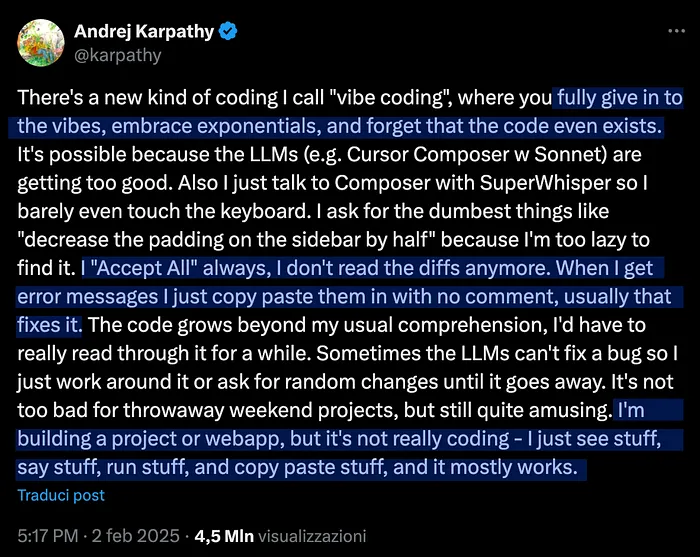
What makes Vibe Coding the new craze? Natural language input. Instead of directly writing code in Java or another coding language, you get to use the simple, straightforward language of your choice to tell the AI what you want the software to accomplish. Vibe Coding is also a refocus on the “What”. Instead of worrying about your code, you get to be 100% focused on the goals you want to achieve with your finished product. AI does the rest.
At its most basic, Vibe Coding is a collaborative approach between AI and humanity, in which humans lead the AI and leverage its abilities to create code quickly and efficiently.
A General Overview of Vibe Coding
You give the platform “prompts” or questions and statements about what you want to see on your site. The AI platform generates code based on the information you gave it and shows you what it built. You then have to decide what does and does not work,and what needs to be changed and how.
Most importantly though, you have to start off with a clear concept and vision in your head.
- Choose your Platform. There are so many different vibe coding builders to choose from, that it is difficult to name them all. Lovable, Bolt, Replit and Cursor come up towards the top of most searches though.
- Conceptualize. Visualize the end product and break it down into small, easily managed parts.
- Prompt. Feed your concept to the AI using natural, conversational language. Be as clear and as specific as you can possibly imagine, like talking to a toddler that takes everything literally. Remember to keep everything in small, manageable chunks as you feed things to the AI. Tip: Use Chat GPT or Claude to help write your prompts to feed into the AI builder.
- Define Your Needs. The better the prompt the better the code. Everything in Vibe Coding depends on the quality of your input to the system.
- Generate. NowAI will start generating code for you based on your prompts, you’ll start to see your ideas made real.
- Review & Refine. Examine the code, look through every aspect of what you now have in front of you. Does it work as intended? Does it need adjustments? How can you improve it?
- Iterate. If things could be better, provide feedback to the AI, refining your initial prompts or add specific instructions and information.
- Repeat. Now you just have to go through each section of your site in this (basically) trial and error format.
Key Differences Between Vibe & Traditional Coding
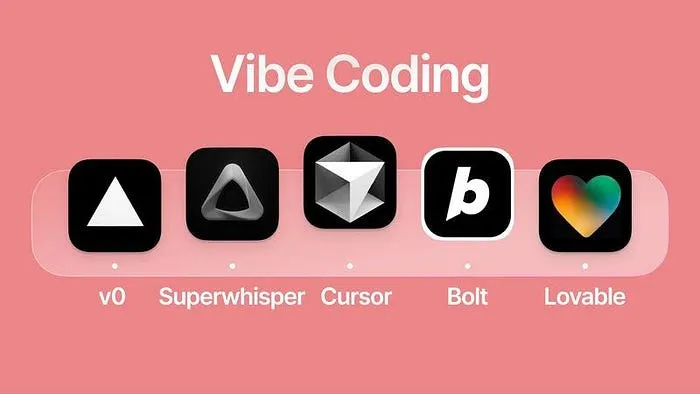
Sourced from an article by Tomas Svojanovsky on Medium.com
Who Can Vibe Code??

Image Sourced from the MIT publication, https://www.technologyreview.com/
That’s the real beauty, anyone can Vibe code. complete programming novices to seasoned software engineers, marketers, designers, customer support, hackers, the list is endless.
Entrepreneurs,startup founders, hackers represent one of the most enthusiastic groups. For them, vibe coding serves as an equalizer. It allows founders without technical backgrounds to rapidly prototype, build and test their ideas without the significant start-up costs typically associated with development teams. Instead of spending weeks or months translating a business concept into functional software, entrepreneurs can now turn a multi-week development cycle into a multi-hour prototype session.
Designers and creative professionals realize that vibe coding bridges the gap between static mockups and functional practice designs. Rather than creating designs that exist only as images or graphics, they generate working UI/UX prototypes that one can actually interact with. This allows designers to explore different design options rapidly and communicate their ideas more efficiently to development teams as well as clients. The technology essentially transforms designers from purely visual creators into creators of functional experiences.
Experienced developers and engineering teams can accelerate development, automate repetitive tasks, generate boilerplate code, the list goes on..
Educators, content creators, and researchers have embraced vibe coding as a tool for building custom solutions tailored around their specific needs. Teachers can quickly create interactive educational tools without needing more advanced degrees, while researchers and data scientists can work without getting bogged down in syntax details. These groups particularly value vibe coding's ability to turn ideas into almost immediately usable software because it permits them to focus on their core strengths while still creating powerful tools.
Communication tool, got an idea? Prototype it, send it to your team and see if everyone’s on board, all within the hour.
Pros & Cons of Vibe Coding / Why to Use Vibe Coding
Vibe Coding is great in terms of speed, accessibility, and productivity, it can also create concerns about code quality, security, and long-term maintenance. Understanding the pros and cons is good for making informed decisions about when and how to incorporate vibe coding into development workflows.
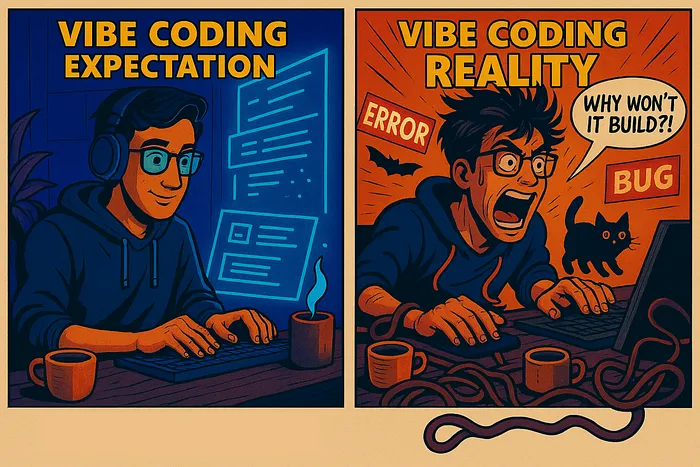
Created by ChatGPT for an article by Rahul Singh for medium.com
Advantages of Vibe Coding
- Faster Development: AI can quickly generate functional code, dramatically speeding up the development process compared to the traditional hand-coding approach.
- Reduced Boilerplate: By automating creating repetitive, routine code structures, vibe coding decreases much of the tedious grunt work that typically consumes time, energy and budget, allowing developers to focus on higher-level logic and innovative design decisions.
- Increased Accessibility: The technology opens up software development by empowering non-technical individuals to build functional applications, breaking down traditional barriers and fostering greater inclusivity in the development community.
- Enhanced Productivity: Experienced developers can delegate routine coding tasks to AI assistants, freeing up their time and expertise for complex problem-solving, system architecture, and strategic project decisions that require human insight and creative thought.
- Rapid Prototyping: Vibe coding enables rapid development of minimum viable products (MVPs), allowing teams to test concepts and validate ideas on the open market in hours rather than weeks, significantly reducing time-to-market for new innovations.
Disadvantages of Vibe Coding
- Code Quality and Security Risks: AI-generated code may contain vulnerabilities or fail to adhere to established best practices. This is particularly problematic in production environments where security flaws could expose systems to attacks or data breaches.
- Maintainability Issues: Code produced by AI tools can be overly complex and difficult to understand, debug, and maintain over time. This is especially true as projects grow in scope and size, requiring ongoing modifications or updates from new team members as turnover occurs.
- Debugging Challenges: Troubleshooting problems in AI-generated code can be particularly difficult, as non-developers or technical folk run into issues.
Vibe Coded Website Examples
Here are five websites created using AI demonstrating the range of possibilities with vibe coding. These projects illustrate not only the technical capabilities of current vibe coding tools but also the creative problem-solving that AI enables. From simple landing pages to interactive applications…
Example 1: Carb Counter by Morgan Brown was made in Replit and initially created to help manage the diabetes and blood glucose levels of the developers son.
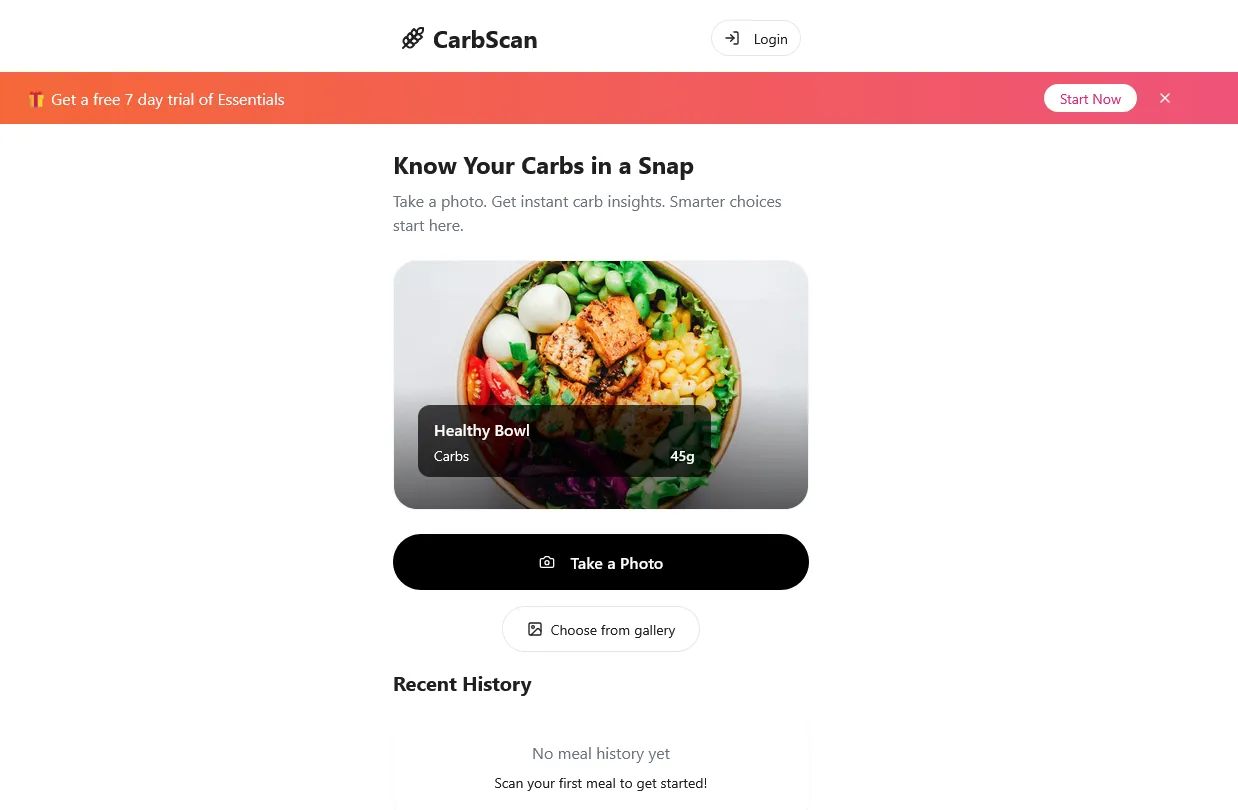
Example 2: Baby Care Tracking by Javier Evelyn was built using Lovable to help him track feedings, sleep, diapers, and meds.

Example 3: Personalized Greeting Card Generator by Bob Sheth was built using Cursor, Windsurf, and Claude Code

Example 4: Pickleball Games Tracker by Jacob Jolibois was built using Replit to track and analyze pickleball matches

Example 5: A Bedtime Storytelling App, by Harshitha P. was built using Bolt & Supabase and takes your daily emotions and thoughts and turns them into stories for your children.
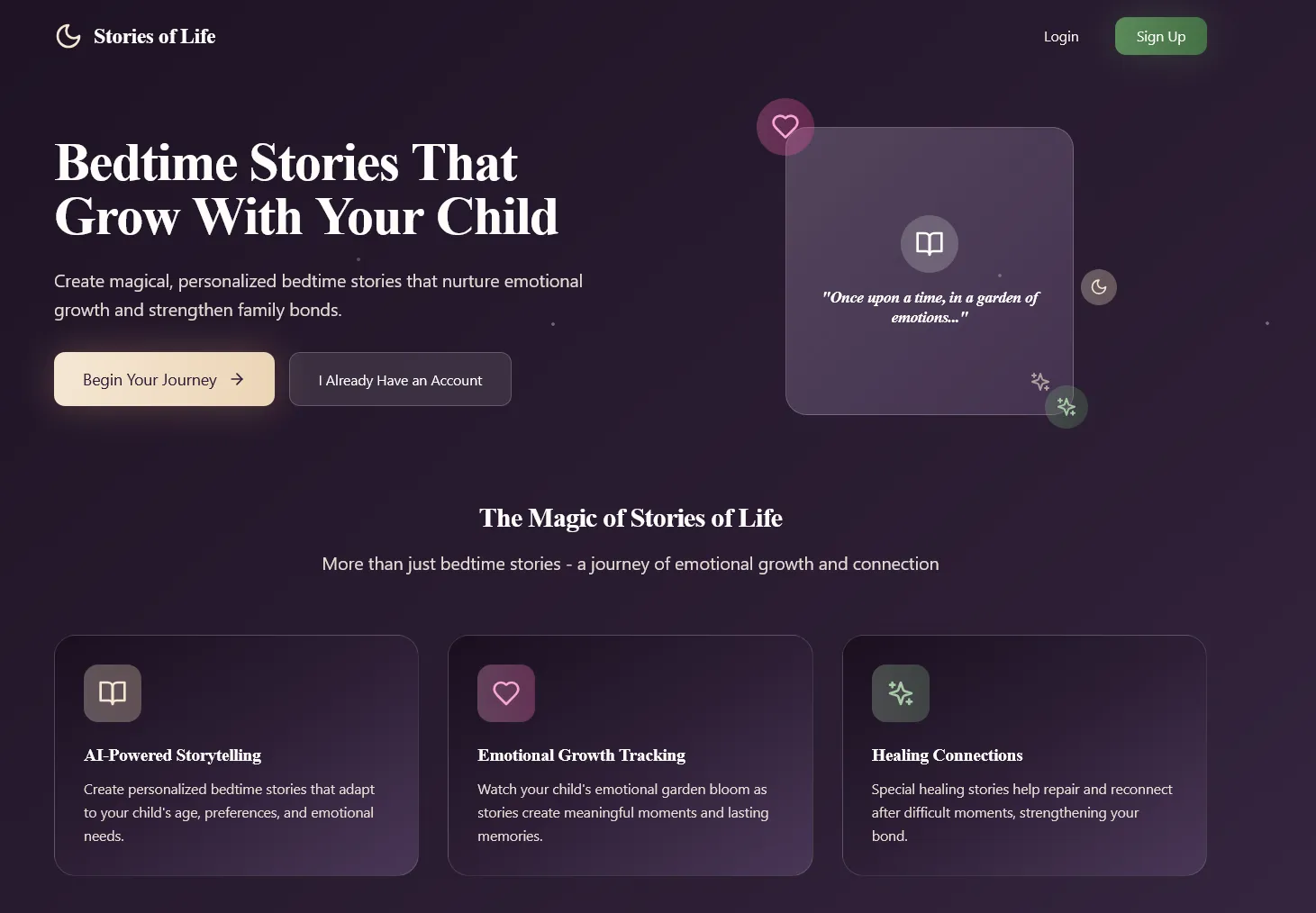
The Security Risks of Vibe Coding

Created using ChatGPT by the author for this article
AI models learn from vast repositories of public code, including insecure or outdated patterns. This approach can create several vulnerabilities: hardcoded credentials directly embedded in source code, SQL injection vulnerabilities from unsanitized user input, and Cross-Site Scripting (XSS) flaws where user data is directly inserted into HTML without proper sanitization. The models prioritize fulfilling functional requirements over security considerations, generating code that works as requested but lacking critical security measures like file type validation, filename sanitization, or proper authentication checks.
To counteract these security risks, developers and organizations are using multiple mitigation strategies. Security-focused prompt engineering has emerged as a frontline defense, where users explicitly incorporate security requirements by requesting "a secure login function that prevents SQL injection, brute force attacks, and properly hashes passwords" rather than simply asking for "a login function."
How Memberstack and its Employees are Exploring Vibe Coding
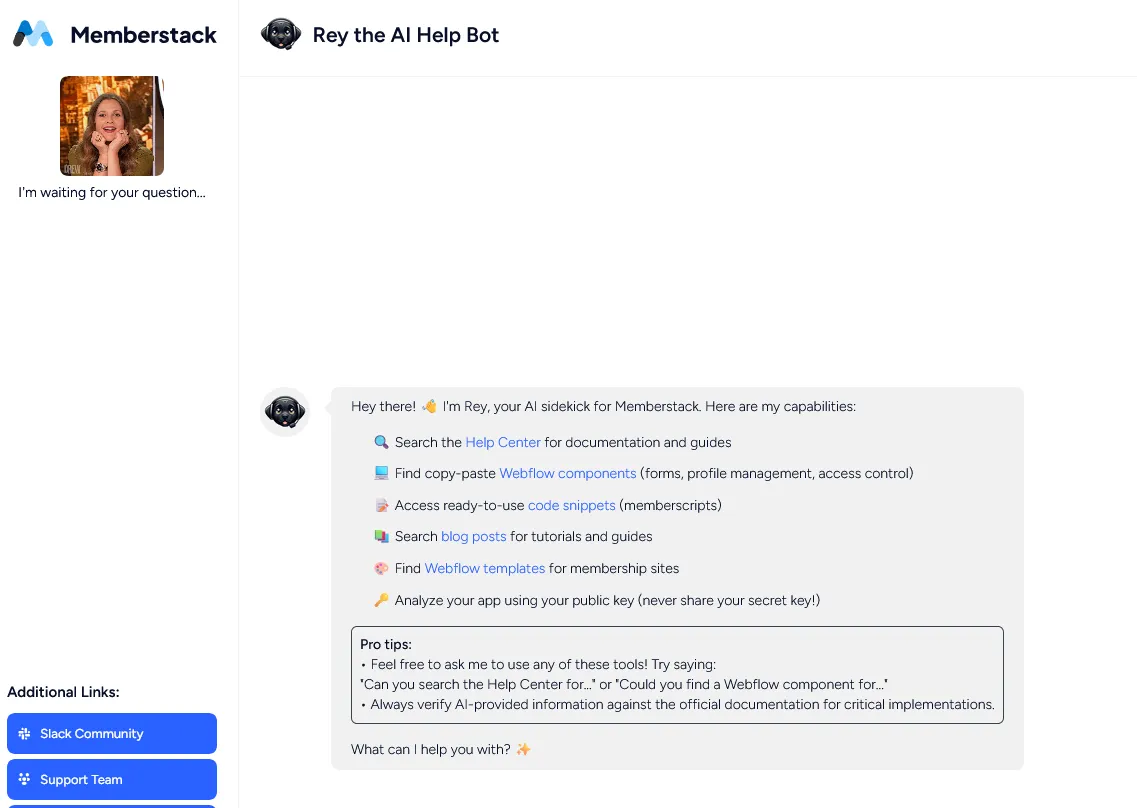
Screenshot of the Memberstack AI Help Bot Main Page from Memberstack.com
Memberstack has long had a very detailed policy on the use of AI in writing. We also have our own AI helpbot named Rey! However, with the development of Vibe Coding we are, like all of you, standing at the beginning of a new phenomena, looking on, and trying to organize our thoughts about how we feel about it and hope to use it.
We interviewed one of our longest term employees, Julian Galluzzo (he of Youtube fame), to get his take on Vibe Coding and this next chapter in the AI assisted book of life. Julian talked to us about how vibe coding is transforming how people approach web development, regardless of their technical background.
Julian has spent 4-5 years building web applications primarily through no-code tools like Webflow, Memberstack, and Make. While he understood the fundamentals of how code worked, actually writing it remained out of reach—until AI coding came along.
"I was immediately drawn to AI coding because it closes this gap for me.”. Now he is using vibe coding both for personal passion projects and daily work tasks, including teaching others how to harness these tools. What excites him most is the creative freedom: "The fact that I can create! Before, I had to ask a developer for every little piece of code which I needed. Now I can leave them alone to do the more important work." However, he maintains a realistic perspective about its limitations, noting that while AI can write code, you still need to understand how your code works to build and manage applications. This balanced approach reflects a broader excitement about how AI coding is progressing for both seasoned developers and everyone else.
FAQ:
1. What is "Vibe Coding"? Vibe coding is AI-assisted programming where you describe what you want to build using natural language, and the AI creates the code for you. The key is "fully giving in to the vibes" - trusting the AI's output without necessarily understanding every line of code it creates.
2. How does vibe coding differ from traditional coding? Unlike traditional coding where you manually write each line in a separate “code” or “language”, vibe coding shifts your role from coder to director. You focus on describing outcomes (providing prompts to the AI) while AI handles the technical implementation. A key difference is that vibe coding involves accepting AI-generated code without potentially full understanding it, whereas traditional coding requires deep knowledge of syntax and logic.
3. Can vibe coding be used for backend development? Vibe coding can handle backend development including API creation, database setup, and server-side logic. However, backend security is a major concern since AI-generated code can miss critical security best practices, potentially leaving applications vulnerable to attacks. It is imperative to either craft your prompts to the AI accordingly, or to closely check the code for security concerns separately.
4. Is vibe coding beginner-friendly? Vibe coding is designed to democratize app development for non-technical users by allowing them to communicate in plain language rather than learning programming syntax. It enables early coding beginners and non-programmers to create functional applications without manually writing code.
5. Can vibe coding be used for large-scale web applications? Vibe coding excels at speed and creativity, but it comes at the cost of flexibility and long-term maintainability. This can be especially true for complex or large-scale projects where fine control over every system component matters. It's currently best suited for personal, low-stakes projects rather than enterprise-level applications.
6. What platforms and tools are available for vibe coding? Popular vibe coding platforms include Lovable, Bolt, Replit, and Cursor, each with different strengths and specialties. You can also use general AI tools like ChatGPT or Claude to generate code that you then implement in traditional development environments.
7. Who is the target audience for vibe coding? Anyone can use vibe coding, whether you are a programming novice, an experienced developer, or an entrepreneur, designer, educator, or researcher. It's particularly valuable for entrepreneurs who want to prototype quickly without hiring development teams and designers who want to create functional prototypes instead of static mockups.
8. What types of projects work best with vibe coding? Vibe coding excels at rapid prototyping, MVPs, personal projects, educational tools, and simple applications. It's particularly effective for projects where you need to test concepts quickly or create functional demos for communication purposes.
9. How important are good prompts in vibe coding? Extremely important - the quality of your output depends entirely on the quality of your input. Be as clear and specific as possible, break complex requests into smaller chunks, and consider using AI tools like ChatGPT or Claude to help you write better prompts for your vibe coding platform.
10. When should I choose traditional coding over vibe coding? Choose traditional coding for large-scale applications, projects requiring high security standards, complex long-term projects, or when you need full control over every aspect of the system architecture and performance optimization.
Over 200 free cloneable Webflow components. No sign up needed.
Add memberships to your React project in minutes.

.webp)







.png)